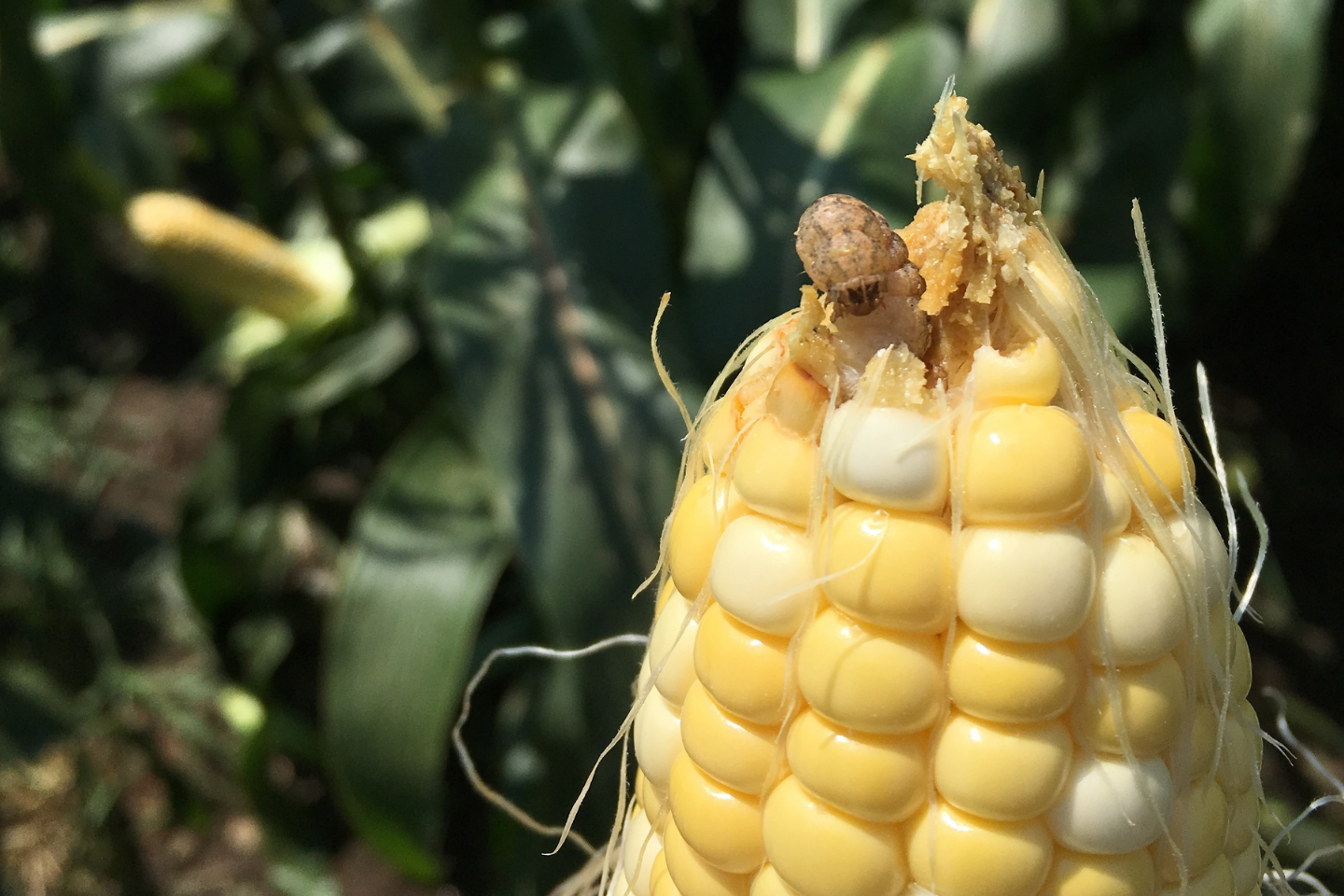Since the introduction of Bt corn hybrids that are traited for ECB control, many field corn growers have crossed European Corn Borer (ECB) off their list of pests to worry about during the growing season. That's a bad idea.
With the recent discovery of a population of ECB with resistance to the Cry1f protein, there have been renewed concerns surrounding the longevity of Bt hybrids for ECB control. It's important to scout Bt corn traited for ECB to determine if the traits remain effective. For more information regarding the occurrence of Cry1F resistance ECB please follow link in the Additional Information section.
ECB - A refresher
In Eastern Canada, there are two distinct types of ECB:
- Univoltine moths – One generation per year
- Bivoltine moths – Two generations per year
Single generation (univoltine) moths are generally found north of Hwy 401 in Ontario, much of Quebec and the Maritimes. Bivoltine moths are found in areas of Southwestern Ontario and Quebec.
ECB overwinter as larvae in corn stalks and other residue. Once the temperature begins to warm up in the spring they pupate and become adult moths over a 2-week period. The moths then travel to the grassy field edges to mate. Females return to the corn fields and lay their eggs on the underside of corn leaves close to the mid-rib. Eggs hatch in about 3 to 9 days. Once the larvae hatch, they begin feeding on the leaves in the whorl, producing pin-sized holes. As they mature, the larvae move into the mid-vein of the leaf and subsequently into the stalk. Fourth and fifth instar (mature) larvae exit the stalk and move to the ear zone, where they may feed on the kernels prior to pupating. Second generation ECB will frequently lay eggs on the ear leaf. The larvae enter the ear through the silk channel, leaving little indication of feeding outside the ear.

Peak flight and egg laying
ECB moth flight is more related to degree days than a calendar date.

Scouting
Scouting is a key factor in managing ECB in non-Bt corn fields. Identifying and counting egg masses and larvae will help determine if a control spray is warranted. Scouting of Bt corn is also needed to ensure its continued effectiveness for ECB control. Early-season moths are attracted to taller corn (early planted fields) and second-generation moths are attracted to late-planted fields that are in silking/tasseling.
To scout for ECB larvae and egg masses, examine a minimum of 5 sets of 20 plants in a field.
Univoltine or 1st generation bivoltine scouting: Count the number of plants with shot-hole damage, and at each location pull the whorl from 1-2 damaged plants, carefully examining it for live corn borer larvae.
2nd generation bivoltine scouting: Look for egg masses on the underside of leaves close to the mid-rib. Repeat scouting every 5-7 days for the duration of peak moth flight (approximately 1 month)
Use the OMAFRA ECB threshold calculator to determine if an insecticide spray is needed.


If an insecticide application is needed
Choose Coragen® MaX insecticide for long-lasting control if a European corn borer insecticide application is needed.
Additional Information
ECB Trapping and Monitoring
The Great Lakes and Maritimes Pest Monitoring Network will be trap monitoring for ECB.
Current Resistance Status in Canada: In Nova Scotia ECB has developed resistance to the Cry1F protein in Bt corn. Since it is unknown if the resistance trait has spread outside of Nova Scotia, growers are asked to scout their Bt corn hybrids for ECB damage.
References
European Corn Borer. Ontario Crop IPM. OMAFRA
Bob Wright. 2009. Begin scouting first generation Corn borers. Institute of Agriculture and Natural Resources. Crop Watch. University or Nebraska, Lincoln.
Brown., C. 2017. Agronomy guide for field crops. Pub 811. OMAFRA.

